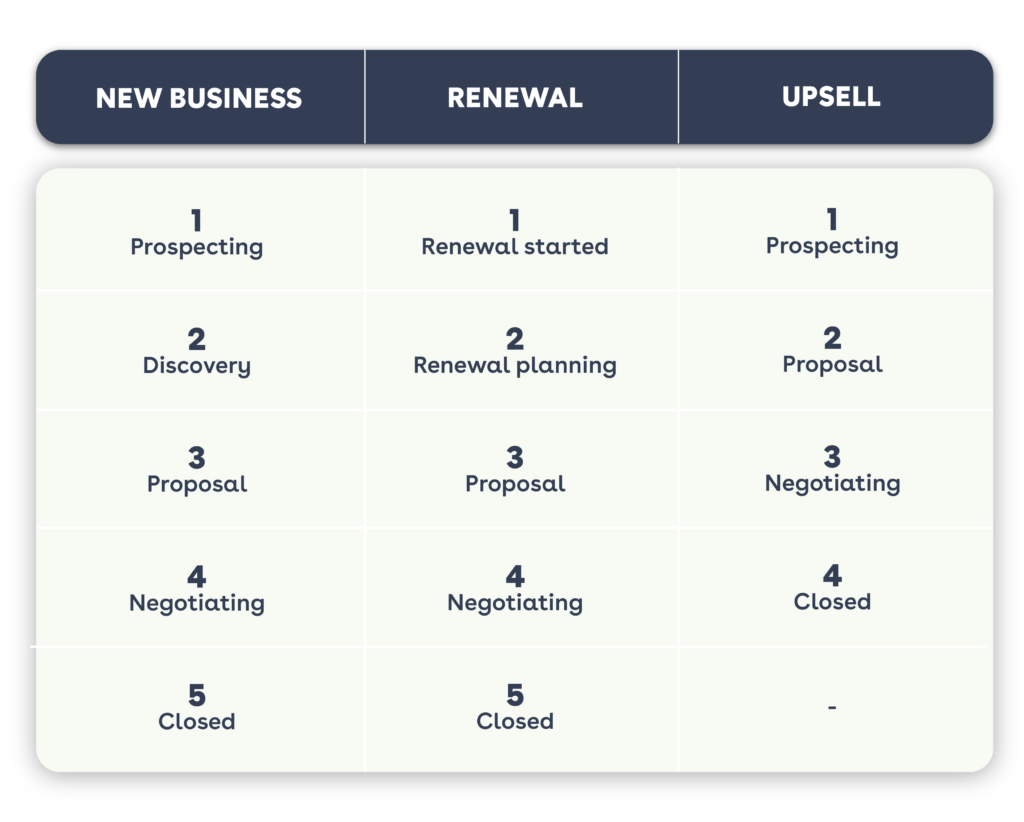Opportunity Infrastructure 101
Ah, the building blocks of RevOps. While they don’t always make for the most exciting projects, it’s what ultimately allows us to do the interesting stuff.
Of course, we get excited to do the big innovative projects (see Intercom’s automated expansions), but before you can do those, there are some early foundational things to be mindful of.
💡 We think of Revenue Architecture as the core building blocks of our systems. We spend a lot of time thinking not only about the tools we implement, but also the data model, integrations, order of operations, and permissions.
The first principles of a great opportunity
infrastructure are:
- Know your opportunity types: Most subscription sales organizations use New Business, Renewal, and Expansion as their primary opportunity types.
- New Business: Net new customers that you are not currently working with
- Renewal: Renewal of a specific subscription or set of subscriptions for an existing customer
- Expansion: Increase in volume, cross-sell, or add-on features for an existing customer’s subscription
- Stages represent how the buyer engages with you and are linear in nature.
- Opportunities represent a transaction in time. That is, they tell you that a specific sale happened on a specific date for a specific amount. For tracking the current state of a customer’s subscription, best practice is to use a custom subscription object representing the products and pricing the customer is currently subscribed to.
- At a minimum, opportunities track amount, product, start date/end date, close date and information about the activity that happened during the sale
Opportunity Record Types
Here is the most common design for record types in SaaS with sample stages:

Tips on setting up record types & stages
- At a minimum, your stages should reflect:
- Prospecting – Confirming that the customer has real buying intent
- Discovery – Building knowledge and understanding on your customers pain and needs
- Proposal – Proposing a solution aligned to customer’s needs, along with a priced quote
- Negotiation – Aligning on commercials and terms for the proposal
- Closed – Customer has signed a contract, and has been passed off for billing and provisioning
- Limit the number of record types – ideally, each record type should represent a distinct sales process with its own stages and requirements. As mentioned above, these are typically aligned to New Sale, Renewal, and Expansion.
- Clearly define exit criteria for each of your sales stages, and ensure your sales team is enabled on this criteria.
- Leverage Sales Paths and the Guidance to Success section to highlight the criteria or other useful information.
The Product Table
You will not regret spending time to design a clean product table.
💡 Product Table vs Product Line Item:
To ensure a comprehensive view in your system, you will need to add the products themselves, as well as fields to accurately describe them. Having a clear definition of what properties reside in each of the product objects is key to a scalable org.
We usually recommend sticking to the following when it comes to the Product and Opportunity Product objects:
- Product: should contain fields related to the product’s intrinsic characteristics, and these should be applicable independently of who you are selling them to. Some examples of fields you might want to create in this object:
- Unique IDs that either reference or are referenced by other systems
- Fields indicating if the product allows for discounting or has any special processing
- Field that indicate recurring / non-recurring revenue
- Opportunity Product: fields indicating how the product is adjusted to a specific client should live under this object. Some common examples of fields in this object:
- Start and End Dates for the product
- Additional notes
Note: You might want to consider having some of the Product fields copied to the Opportunity Product. This allows your team to edit some of the characteristics of the product if needed.
Sneak peek into what you’ll do next:
Once you feel solid in the architecture you’ve built, you’ll have the foundations to do the fun stuff like:
- Automate Renewals (an easy flow!)
- Automate Expansions based on usage
- Forecast confidently
- Report on performance by type (renewals, expansions, new business) confidently